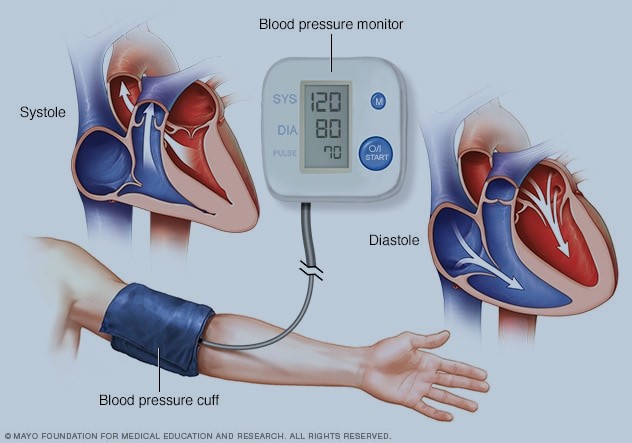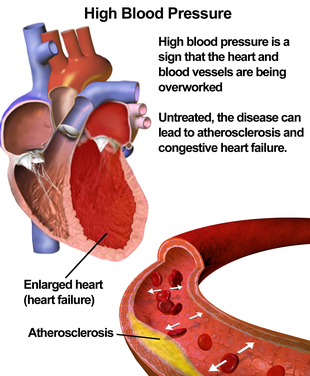
Hypertension, as most refer to as the “silent killer,” has been an issue of concern and worth discussing due to its high prevalence among young people In Ghana. This ailment occurs when a surge in your blood pressure(BP above 140/90), with some clinical signs and symptoms such as palpitations, easy fatigability, headache, et cetera. It is the leading contributor/ risk factor of some medical emergencies such as Cardiovascular accidents (stroke), Heart failure, Renal failure et al. in Ghana, and even among the whites.
An analysis of secondary data from the Ghana demographic and health survey gave the prevalence of Hypertension in Ghana as 13.0% (12.1% for males and 13.4% for females). In addition, there was a 22% prevalence of high-risk pre-hypertensives in Ghana.
A non-communicable disease with a genetic predisposition is growing faster than imagined within the populace, especially in Africa. Globally, the burden of Hypertension (HPT) is 40%, with developed countries having a prevalence of 35% and Africa having the highest rate of 46%. Sub-Saharan Africa is doing 30.0% – 31.1%, showing how dominant this disease is in our space.

Furthermore, this shows how exposed the black race is, as this deadly condition is concerned. Generally, the perception has been that HPT is an adulthood health problem. Therefore most interventions instead target the populace of older people in Africa – this is where most health scholars missed the point.
One may ask about the causes or risk factors of this deadly disease. Unfortunately, they are quite a number. Obesity ( 42.5% of Ghanaians are obese) and old age in sub-Saharan Africa appears to be invariant determinant of Hypertension.
Some causes include genetic factors, previous history, poor stress management, a sedentary lifestyle, etc.
The condition comes with long-term complications – something that has a significant effect on the individual and the country at large. Some complications include kidney failure, heart failure, stroke, aneurysm, dementia, metabolic syndrome, et cetera.
Why High Prevalence among the youth?
This has been a worrying situation, a subject begging for attention in the medical setting. The workforce of a country, either developed or not, is the working youth who have the excess energy to go on their duties – pay more direct and indirect taxes, which has a more significant effect on revenue mobilization and development.
The current crop of youths, especially in our part of the globe, has been clamped down by several factors, including health problems – a disturbing situation to the working force and industrial growth.
Hypertension among the youth.
According to the Centers for Disease Control and Prevention(CDC), one in twenty-five youth ages 12 to 19 have Hypertension, and 1 in 10 has elevated blood pressure (pre-hypertension). Gradually, this is becoming more predominant among young ones. As a result, it’s estimated that 1.3 million youth ages 12 to 19 will have high blood pressure and are at risk of having cardiovascular diseases in the coming years.
One of the leading causes of Hypertension among the youth is STRESS – emotional, economic, psychological, or even social.
The youth in most developing countries like Ghana are exposed to economic hardships, unemployment, unfavorable conditions for businesses to strive for, opportunities for the privileged few, and toxic relationships.
All these are considered stressors, which, when poorly managed, can lead to HYPERTENSION. In addition, puberty, obesity, and coexisting metabolic disorders lead to Primary Hypertension becoming a dominant form of Hypertension among Adolescents.
Unpleasing and worrying emerging situation – which has a relation to a sedentary lifestyle. In modern-day Ghana, what the youths have considered as “good life” is someone who can party well, obsessed with folded neck muscles and port bellies. Instead, drinking alcohol or beer has become a norm – some smoke and take excessive tobacco and other drugs to remain active. These directly affect our cardiovascular system, neurons, and lungs, predisposing us to silent disease. A study has shown that this affects life expectancy and quality in other ways.
Family History.
A young person with a family history, either from the maternal or paternal side, stand the chance of getting this disease. This has a link to the genetic predisposition, which runs in generations – getting all family members exposed.
The abovementioned risk factors have caused more harm to the youth, caused many complications – and sent some to their early grave.
Low Education.
It’s being presumed that Hypertension is an old-age ailment; hence no or is less interest in educating the youth on these risk factors that can predispose them. However, a global study by Iga Grad, Agnieszka et al. indicate that only 13.2% of the child have medium knowledge and understanding of the causes, complications, and possible management of the condition.
Geographical settings also come to play – when discussing this issue. For example, youth from urban regions seem to understand the condition at hand, while those in rural areas lack or can’t exhibit any knowledge of this disease.
It will profit one to know that knowledge of HPT among the youth globally remains unsatisfactory and therefore hollers for education and sensitization among the youth. This has contributed hugely to the sudden surge of the condition among the youth.

Preventive Measures.
Looking at its unnerving complications, more than 40% of the youth who get exposed stand the chance of getting organ damage —- Any preventive educative program should be tailored to the child, and their knowledge of the programs should constantly be accessed to know one’s understanding of the condition.
It is necessary to conduct blood pressure tests during check-ups in medical centers and put practice and theory on HPT into one. In addition, health practitioners should be charged to check the Blood pressure of young adolescents below the age of 17 to prevent late diagnosis and management of the condition. This will save young people from dire complications.
Education on adverse effects of sedentary lifestyles.
The youth should be educated on the significance of good health and lifestyle. Such consciousness and cognitions are much needed at this crucial point to redeem several young people who are exposed. Therefore, a good lifestyle devoid of indecent practices, such as smoking, alcoholism, tobacco abuse, and less or no physical exercise, should be adopted wholly to minimize the risk and level of exposure to this non-communicable disease.
To conclude, knowledge about Hypertension among young people remains insufficient, which suggests the urgency for routine education in this area, especially on its clinical signs and symptoms.
Factoring blood pressure measurement and education on family history and how people get exposed in this line in our daily primary education on Hypertension will help.
Particular attention should be paid to strengthening “health” as a personal value and building young people’s sense of personal competence for creating and implementing a healthy lifestyle.
GCBM Contributor: Adjei Boakye
















